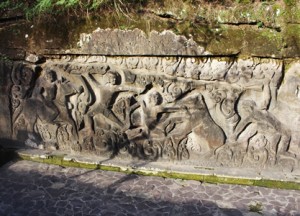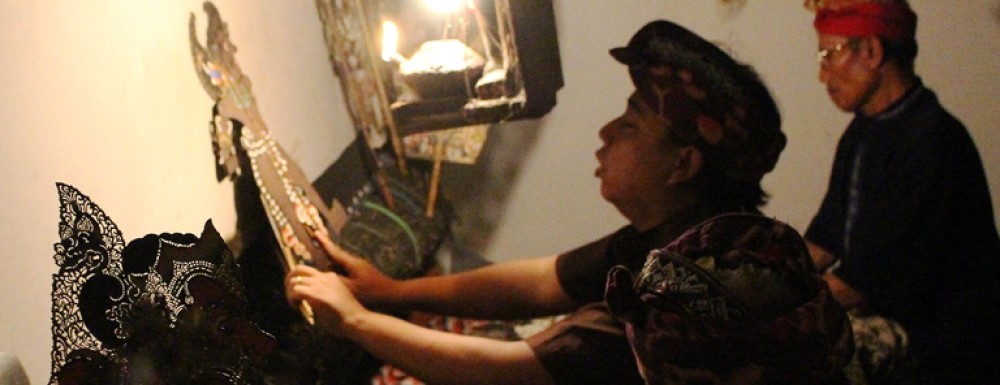This is a draft chapter from my guide Lempad’s Art and Buildings in Bali.
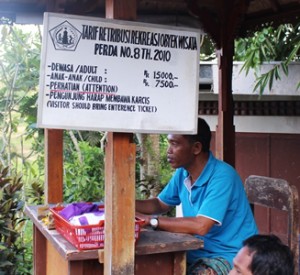
Yeh Puluh temple ticket office, Jl Yeh Puluh, Bedulu, Bali.
This chapter does not direct you to any of Lempad’s own work, but to some much older art which is said to have had a life-long influence on him.
Getting there:
The Yeh Puluh carvings are on the way to Beduluh’s Yeh Puluh temple and you need to be reasonably steady on your feet to see them. At the end of Jalan Yeh Puluh is a car park and a little kiosk where you need buy a Rp 15,000 ticket unless you are Balinese and dressed in temple clothes.
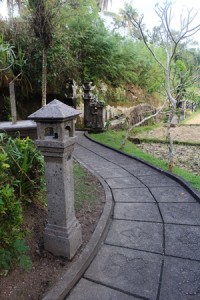 You then proceed down a steep pathway and a small cliff appears on your left with a series of roughly-formed 15th or 16th Century carvings.
You then proceed down a steep pathway and a small cliff appears on your left with a series of roughly-formed 15th or 16th Century carvings.
They overlook Lempad’s family rice fields and he would have often taken offerings to the temple with his father in the 1860s and 70s.
These carvings would have been familiar to the boy Lempad and may have influenced him when he later developed his own artistic style.
They include a hunting scene where several men with swords surround a lion or tiger that is attacking a man. When he was a mature artist Lempad produced several notable bas-reliefs that included a tiger attacking a man.
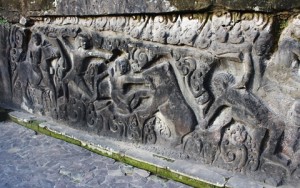
A hunting scene forms part of the Yeh Puluh carvings, Bedulu, Bali.
A hermit may have made the carvings which also depict a semi-naked woman peering from behind a partly-closed door and an image of Ganesha, god of wisdom.
The lively, unfinished style may be the work of an untrained artist. Lempad in later life was known for leaving his work unfinished.
Cultural tips:
Temple clothes include a sarong and sash and you need to cover your upper body including your shoulders. Balinese take a dim view of temple visitors with open wounds or abrasions of any kind and can be very upset to find a temple visitor is menstruating.
